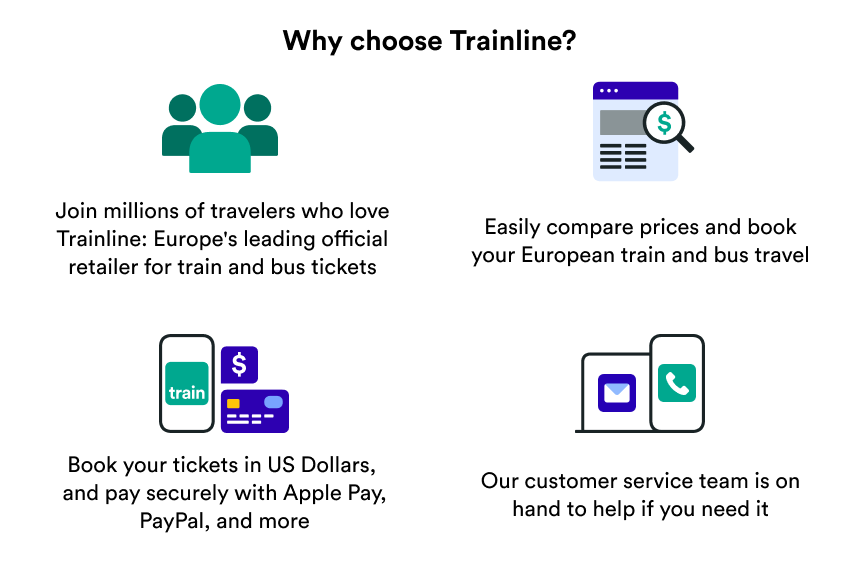You’ll always remember your first trip to Europe.
Especially if you blow your bank account, miss your connecting flights, and fall into tourist traps.
We’ve done all of the above. Twice.
Misadventures are part of any truly great adventure, but you can avoid many mistakes during your first trip to Europe simply by planning ahead. From booking your travel arrangements in advance to making sure you’ve got coins for the loo, here are a few tips for planning a trip to Europe for the first time.
Image Credit: Getty Images, Alexander Spatari. Image Location: Montmartre, Paris, France
Before you pack, plan: how to plan for your first Euro trip
Step 1: Book travel in advance
Your flights are confirmed, now you have no excuse not to book the rest of your travel in advance. The longer you wait, the more expensive your trip will be. You don’t want to pay the day-of hotel rate when it was hundreds of euros cheaper two weeks prior.
And if you thought you’d just pop into any old hostel and snag a bed, remember that the best places to stay in European cities often fill up fast because travelers planned ahead.
Booking in advance goes double for transit. It doesn’t matter if you’re booking a tour, a shared shuttle, a private limo, or relying on public transport, locking in these logistics ahead of time saves you the most money and almost* guarantees that you’ve got what you need, when you need it.
*Fun fact: European train strikes and airport strikes are also planned in advance.
Step 2: Grab the essentials you didn’t know you needed
A packing list for your first trip to Europe deserves its own article: and we’ve got it here.
But part of your planning means understanding that there are certain items you should have on-hand before you travel. For example, bring the correct electrical converter for your devices: the UK and Ireland use a type G plug, most of Europe uses a type C, and the US uses types A and B.
You’ll also want to arrive with local currency in hand. Again, the UK uses pound sterling while many European countries use the euro. Public restrooms may require a fee, so having the right coin on you would really mean a lot to your colon.
Step 3: Plan your route by train when possible
You should know all of your available options for getting from point A to point B, including their approximate costs.
For instance, a rideshare or taxi from the airport to city center may be more expensive than taking public transportation like the train. London, Paris, Milan, Amsterdam, and other major cities have direct trains departing from airport terminals and arriving in the city center.
Air travel between cities may seem “faster”, but that’s before you add in time spent going to and from the airport, as well as all of the other airport shenanigans that add hours to your journey. Plus, most trains in Europe have less luggage and liquid restrictions, which means less hassle for you.
Image Credit: Getty Images, Chris Hepburn. Image Location: Edinburgh, Scotland.
Rail passes for Europe
Did you grab a plane pass that’ll let you travel to 30+ European countries for less than the cost of the flight from the US to Europe?
Oh, wait, that doesn’t exist for planes, does it? Well, it does for trains.
Anyone planning a trip to Europe for the first time will hear about the Eurail Pass. These passes vary in price and use but can ultimately be tailored to the type of trip you’re taking. For instance, if you’re bouncing around the continent for a month, a Global Pass is usually the cheapest option to see multiple countries.
But if you’re only hanging around in Great Britain? A BritRail pass covers train travel through England, Scotland, and Wales, including airport routes like the Heathrow Express and Stansted Express.
Sleeper trains in Europe
Let’s not forget about surprisingly affordable sleeper trains. If you want camaraderie, stay at a hostel; if you want luxury, stay at a hotel. But if you want hotel-like amenities and a bed that’ll take you to Europe’s best cities while you sleep, stay on a sleeper train. Nightly routes connect major cities like London to Edinburgh, Madrid to Lisbon, and Berlin to Zürich.
Best first time Europe trips
Stumped on where to go first? Maximize that PTO with a two-week trip to some of the coolest cities in Europe. We’ve got two routes by train that’ll let you see a lot, save a lot, and stress very little.
Image Credit: Getty Images, Alexander Spatari. Image Location: Paris, France
Crumpets, croissants, and castles: UK + Paris
Part 1: Edinburgh to London via Edinburgh (Waverley) to London St Pancras International: from 4h 29m
Part 2: London to Paris via London St Pancras International to Paris Gare Du Nord: from 2h 17m
You could also call this trek ‘tartans, towers, and tea’. Edinburgh is the magical capital of a magical country and the stunning train ride from Edinburgh to London is reason enough to book it. Once you’ve hit all of London’s best sites, you can go underneath the English Channel by train and arrive in Paris. Yes, from the Tower of London to the Eiffel Tower, no plane required.
Ciao, treno: Milan, Rome, and more
Part 1: Milan to Florence via Milano Centrale to Firenze Santa Maria Novella: from 1h 50m
Part 2: Florence to Rome via Firenze Santa Maria Novella to Roma Termini: from 1h 30m
Part 3: Rome to Napoli via Roma Termini to Napoli Centrale: from 1h 2m
Part 4: Napoli to Palermo (Sicily) via Napoli Centrale to Palermo Centrale: from 9h 5m
Who wouldn’t want to see Pompeii, the Colosseum, and the statue of David between high-end shopping in Milan and Negroni sipping in Sicily? Italy’s fast rails connect you to its iconic cities in less time than it takes to watch a movie set in Italy. From scouting White Lotus filming locations to tossing a coin in the Trevi Fountain, Italy is at your fingertips by train.
Make the most of your first trip to Europe. Download the Trainline app and see the sights you’ve spent years dreaming of.
Header Image Credit: Getty Images, Alexander Spatari. Image Location: Amsterdam, The Netherlands


